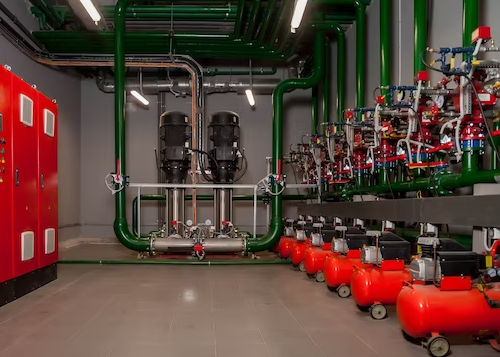Gas Based Suppression / Clean Agent System
A Gas-Based Suppression or Clean Agent System is a type of fire suppression system that uses inert gases or chemical agents to extinguish or control fires. These systems are typically used in areas where water-based systems are not suitable or could cause damage, such as in data centers, server rooms, museums, and archives.
The system typically consists of a storage container that holds the clean agent, a piping system that distributes the agent, and nozzles that release the agent into the protected area. The system is activated by a fire detection system, which signals a control panel to release the agent into the protected area.
The clean agent works by reducing the oxygen concentration in the protected area, which helps to extinguish the fire. The agent does not leave any residue, making it an ideal solution for protecting sensitive equipment and valuables.
There are several types of clean agents available, including halon, carbon dioxide, and inert gases such as argon and nitrogen. Halon has been phased out due to its negative environmental impact, and newer agents like FM-200 and Novec 1230 have been developed as a more environmentally friendly alternative.
Proper installation, testing, and maintenance of gas-based suppression systems are critical to ensure their reliability and effectiveness. Regular inspections, testing, and repairs can help identify and address any issues that may impact the system's performance in the event of a fire. The system must also comply with local building codes and regulations, which often include requirements for backflow prevention and regular testing.



